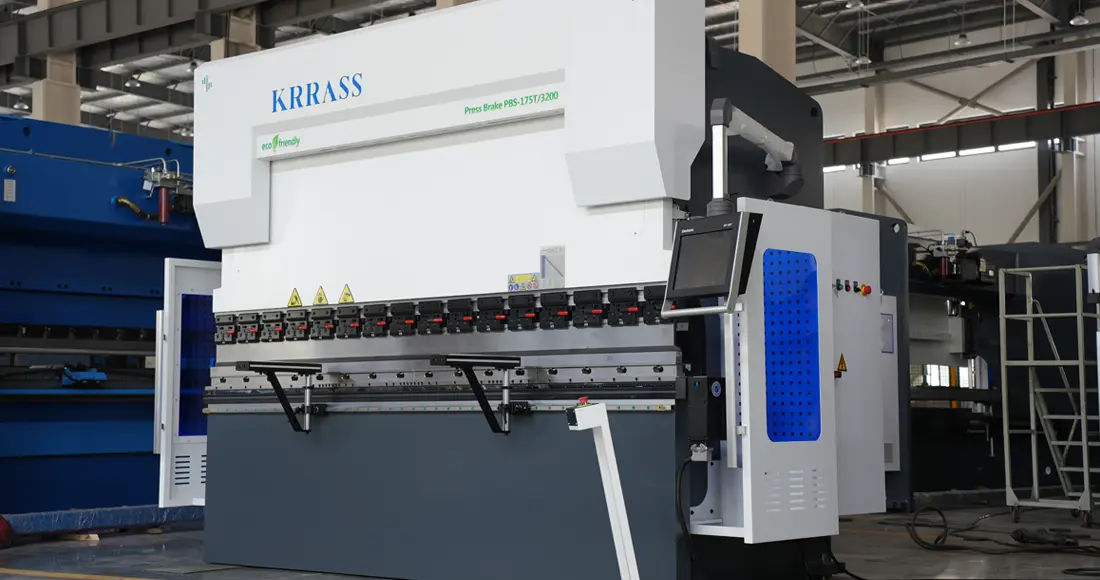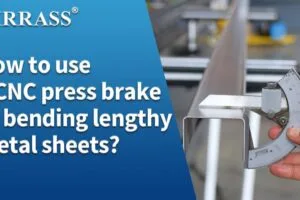In the world of sheet metal fabrication, press brakes play an instrumental role. As technology evolves, understanding the nuances between CNC and NC Press Brakes becomes pivotal for manufacturers. Whether you're a seasoned industry veteran or a newcomer looking to navigate the machinery landscape, this guide aims to demystify the intricacies of these machines and help you make informed decisions in your manufacturing endeavors.
- Application of Press Brakes
- Press Brake Machine Technology
- Understanding CNC Press Brakes
- Delving into NC Press Brakes
- Major Differences Between CNC and NC Press Brakes
- Application Scope and Suitability
- Which is more cost-effective in the long run?
- The Future of Press Brake Technology
- How often should I service my press brake, regardless of the type?
1.Application of Press Brakes
In the world of manufacturing and metal fabrication, the CNC Press Brake and NC Press Brake have revolutionized how industries approach precision bending and forming tasks. Their unique functionalities and advanced tech-driven features have made them an indispensable tool for many enterprises. But what exactly are these press brakes used for? Let's delve deeper into their applications.
1. Metal Sheet Bending: This is the most prominent application of the press brakes. Whether it’s for automotive parts, machinery components, or intricate design elements, both the CNC and NC Press Brakes provide precise bending capabilities. Their high degree of accuracy ensures that the finished product is of the highest quality, fitting seamlessly into its intended purpose.
2. Custom Metal Fabrication: Need a custom metal piece for a project? Press brakes, especially CNC variants, allow manufacturers to create bespoke pieces that fit exact specifications, ensuring a snug fit and flawless integration into larger projects.
3. Aircraft and Aerospace: In an industry where precision is paramount, press brakes play a pivotal role. The aerospace industry often requires specialized components, and these machines help in crafting parts that meet rigorous industry standards.
4. Construction: Many architectural elements, especially in modern designs, require precise metal bending. Be it decorative pieces, structural components, or custom fittings, press brakes ensure these elements are perfectly aligned and fit for purpose.
5. Mass Production: For industries that need to churn out large quantities of metal components, the efficiency and reliability of CNC and NC Press Brakes are unmatched. Their automated capabilities allow for a consistent production line, ensuring every piece is identical and meets the set standards.
In conclusion, press brakes, both CNC and NC variants, have found their rightful place in a plethora of industries, driving efficiency, precision, and quality in manufacturing processes. Their applications are vast, and as technology continues to evolve, we can only expect their relevance and utility to increase even further.
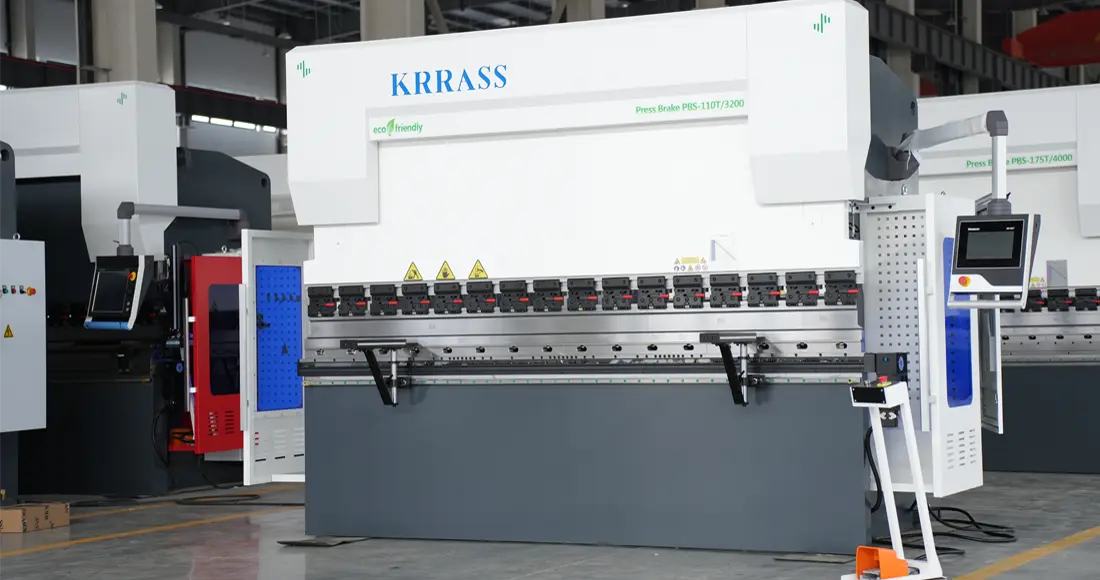
2.Press Brake Machine Technology
The technological advancements behind CNC Press Brake and NC Press Brake machines have reshaped the landscape of metal fabrication. These press brakes are no longer just simple metal benders; they've transformed into complex, precision-driven machines that cater to the ever-evolving needs of the modern industry. So, what drives these behemoths in terms of technology? Let’s find out.
1. Computer Numerical Control (CNC): At the heart of modern press brakes is the CNC system. It allows for precision, automation, and consistency. The CNC system enables operators to input exact specifications and measurements, ensuring the machine delivers precise bends every time. With memory capacities expanding, these machines can now store numerous programs for various tasks, streamlining the manufacturing process.
2. Hydraulic System: The power behind every bend comes from a sophisticated hydraulic system. These systems provide consistent force throughout the bending process, ensuring uniformity in the final product. Plus, advancements in hydraulics have made operations smoother and more energy-efficient.
3. Backgauge Systems: Modern press brakes come with advanced backgauge systems, allowing for multiple axis movement. This aids in handling different bending dimensions and angles with extreme precision, reducing setup time and increasing production rates.
4. Tooling: With the industry moving towards customization and varied applications, tooling has seen significant upgrades. Quick-change tooling systems and segmented tooling options allow operators to swiftly switch between tasks, minimizing downtime.
5. Safety Features: As the technology has progressed, so has the emphasis on operator safety. Press brakes today come equipped with laser safety systems, light curtains, and advanced guarding solutions. These features ensure that while machines operate at peak efficiency, the safety of the human operators is never compromised.
6. Integration Capabilities: With Industry 4.0 setting the tone for interconnected machinery, modern press brakes can seamlessly integrate with other machines in the production line. This interconnectedness allows for smoother workflow, real-time data sharing, and overall enhanced efficiency.
3.Understanding CNC Press Brakes
3.1 What is a CNC Press Brake?
A CNC Press Brake, an acronym for Computer Numerical Control Press Brake, is not just a piece of equipment; it's a revolution in the world of manufacturing. These are machines designed specifically for the intricate task of bending and forming metal sheets and plates. While traditional press brakes relied on manual adjustments and operator expertise, CNC Press Brakes bring in the power of computational precision.
At its core, what differentiates this machine is its computerized system. This system automates the metal bending process, allowing pre-determined specifications to be fed into the machine, thereby achieving the desired bends with impeccable accuracy. The integration of computer systems means fewer manual adjustments, less room for human error, and a significant increase in repeatability and consistency.
3.2 Key Components and Their Functions
Every machine is as good as its components. To truly appreciate the marvel that a CNC Press Brake is, one must understand its key components:
Bed and Ram: The bed provides a sturdy base for the machine, ensuring stability during operations. The ram, on the other hand, is the dynamic component. Moving with force, it interacts with the die and punch to mold the metal. These two components might seem basic, but their synchronization is vital for accurate bending.
Backgauge: A vital component for precision, the backgauge does more than just hold the metal sheet in place. It positions it perfectly before the bending begins. This ensures that each bend is consistent and matches the desired specifications. Modern backgauges, with multiple axes, can move in various directions, enabling complex bending operations.
Die and Punch: Think of these as the hands of the machine. The punch pushes the metal sheet into the die, creating the desired bend. The shape and size of the die and punch determine the angle and radius of the bend. With advancements, various tooling options are now available, catering to diverse fabrication needs.
CNC Controller: Often referred to as the brain behind the operation, this is where the magic happens. It's an interface where operators input the desired bending parameters. From here, the machine gets its instructions, ensuring each operation adheres to the predetermined specifications. With modern controllers, complex bending sequences can be programmed, stored, and recalled, making the process seamless.
3.3 Benefits of Using CNC Press Brakes
The popularity of CNC Press Brakes isn't just because they incorporate advanced technology, but also because of the tangible benefits they bring to the manufacturing floor:
Precision and Accuracy: Thanks to the computational capabilities, these machines achieve bends with a degree of precision that's unparalleled in the industry. This means reduced errors, fewer reworks, and minimal waste, leading to cost savings.
Efficiency: Speed and automation combine to make these machines incredibly efficient. Once a particular operation is programmed, the machine can replicate it countless times without manual intervention, making it an asset for mass production.
Flexibility: With the ability to program various operations, manufacturers aren't limited to specific designs. Whether it's intricate, custom bends for specific projects or standard bends for mass production, the machine handles it all.
Consistency: In manufacturing, consistency is key. With CNC Press Brakes, once a design is programmed, every subsequent bend is a mirror image of the previous one, ensuring product uniformity.
3.4 Limitations and Challenges
Despite their prowess, CNC Press Brakes aren't without challenges:
Initial Costs: Quality comes at a price. These machines, with their advanced capabilities, can have hefty price tags. This means a significant initial investment, which might be a challenge for smaller manufacturers.
Training Needs: Sophisticated machinery requires skilled operators. Adequate training is essential, not just for efficient operation but also for safety. This can sometimes prolong the integration of the machine into the production line.
Maintenance: While built for durability, the complexity of these machines means they aren't immune to wear and tear. Regular maintenance is essential to ensure longevity, which can sometimes lead to production downtimes.
Software Dependencies: The efficiency of the CNC system is heavily dependent on its software. Updates are crucial for optimum performance. There's also the challenge of compatibility issues, especially when integrating designs from various software platforms.
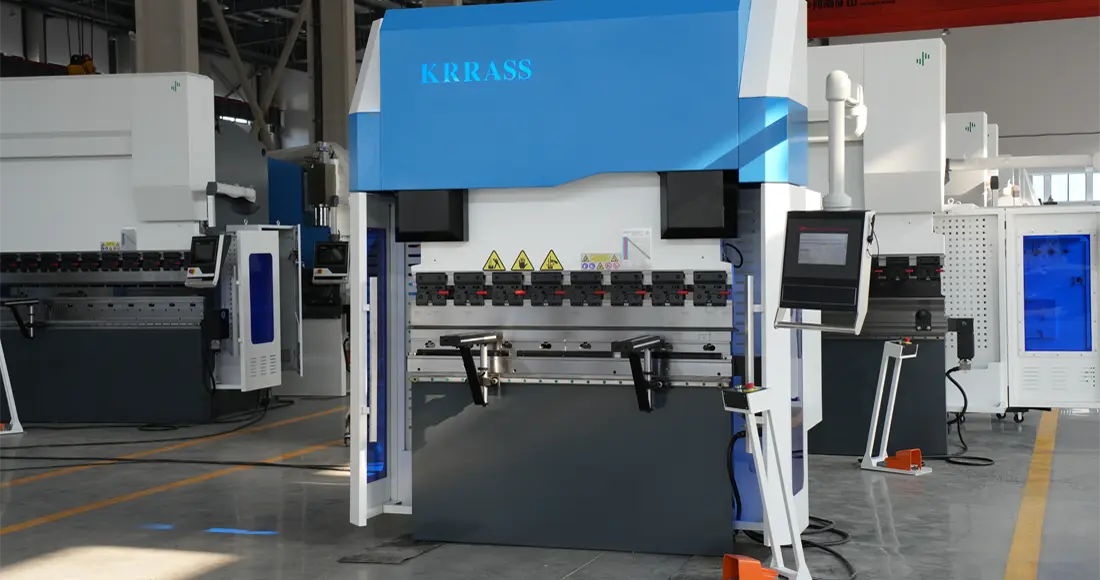
4.Delving into NC Press Brakes
4.1 The Fundamentals of an NC Press Brake
When we talk about NC Press Brakes, we're venturing into a territory that artfully blends technology with traditional craftsmanship. Originating in the middle of the 20th century, the NC (Numerical Control) system was a revolutionary concept that started the trajectory of automation in manufacturing.
At its core, an NC Press Brake functions as a bridge between fully manual operations and the sophisticated world of computer control. By allowing operators to store a limited set of programs, NC Press Brakes championed efficiency without overwhelming its user with intricate software dynamics.
Being less automated than CNC machines, the NC variant prizes adaptability. While some may see its limited storage capacity as a downside, many manufacturers view this characteristic as a way to ensure each product receives a personal touch, a hallmark of quality craftsmanship.
4.2 Distinctive Features and Parts
To truly appreciate the nuanced design of NC Press Brakes, it's pivotal to recognize its distinctive features:
Control Panel: This user-friendly interface is designed with ergonomics in mind. With intuitive controls and a layout geared towards efficiency, operators can seamlessly transition between tasks. It provides real-time feedback and facilitates quick corrections, ensuring products adhere to the highest quality standards.
Back Gauge System: The heart of precision. This system, often moving along one or two axes, ensures that sheet metal is positioned perfectly. While it might not boast the multi-axis movement of some advanced CNC systems, its robust design ensures reliable, repeatable results.
Hydraulic System: At the crux of every press brake lies a robust hydraulic system. In NC Press Brakes, this system is calibrated to provide consistent pressure and force, ensuring that each bend is uniform, irrespective of the machine's runtime.
Manual Fine-tuning: In an age of automation, the ability to make manual adjustments might seem archaic. However, for artisans and craftsmen, this feature is invaluable. It offers a level of flexibility that few machines can match, enabling operators to achieve the desired perfection in each product.
4.3 The Advantages of NC Press Brakes
While technology continues to advance, the NC Press Brake retains a loyal following, and for several good reasons:
Cost-Effectiveness: For businesses on a budget, the initial investment required for an NC Press Brake is often significantly lower than that of a high-end CNC machine. This, combined with lower maintenance costs and impressive durability, ensures excellent value for money.
Adaptability: While CNC machines require specific programs for every operation, the NC variant, with its manual adjustments, can adapt on-the-fly. This makes it especially useful for bespoke projects where unique specifications might be the norm.
Less Complexity: With fewer electronic components and software elements, NC Press Brakes are often easier to repair and maintain. This simplicity also translates to reduced downtime, ensuring production lines remain active and efficient.
Training & Onboarding: For new operators, the straightforward nature of NC Press Brakes means a steeper learning curve, allowing them to become productive members of the team faster.
4.4 Potential Downsides
No tool is without its limitations. Here are some aspects where the NC Press Brake might not measure up to its CNC counterpart:
Limited Automation: In mass production environments where efficiency is paramount, the semi-automated nature of NC machines might be a drawback. This limitation can result in slightly slower production times.
Reduced Storage Capacity: While ample for many tasks, the limited program storage might not cater to operations requiring a vast array of different bends and folds. This necessitates more hands-on adjustments, which can be time-consuming.
Refined Precision: While incredibly accurate, when compared head-to-head, the NC Press Brake might fall a fraction short of the ultra-fine precision a top-tier CNC machine offers.
Integration Challenges: Modern manufacturing often involves integration with other machines and systems. The more mechanical nature of NC machines can sometimes present integration challenges, especially in fully automated setups.
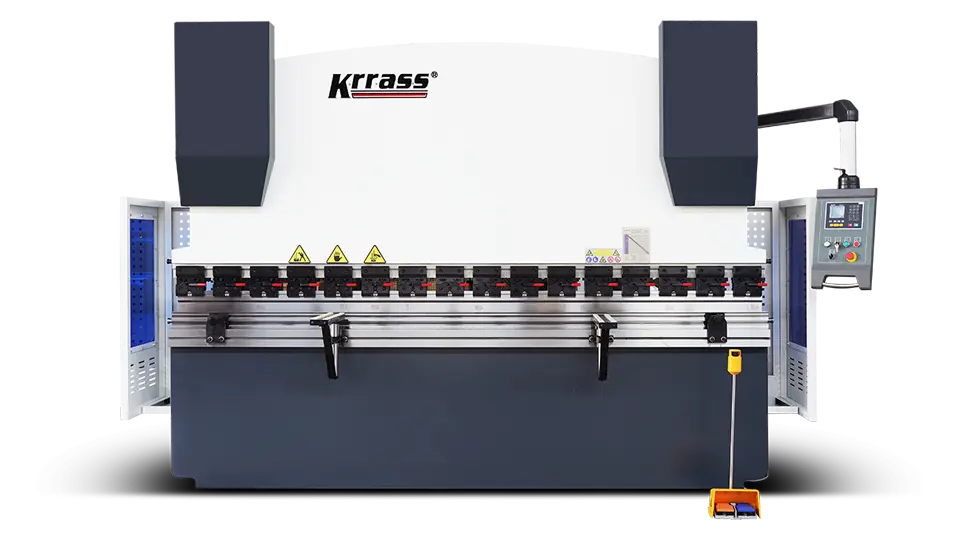
5. Major Differences Between CNC and NC Press Brakes
The world of sheet metal fabrication has witnessed vast technological advancements over the years. Among the stars of this progression are the CNC and NC Press Brakes. However, while they might seem synonymous to the uninitiated, industry professionals know the pronounced differences between the two. Below, we dissect these differences in-depth to shed light on their unique characteristics.
5.1 Operational Mechanisms Compared
At the heart of any machine lies its operational mechanism. NC Press Brakes originated during the early days of computerization. They operate using a set of commands input directly by the operator into the system. Think of it as manually feeding instructions every time a task needs to be executed. The process, while automated to a certain extent, still requires significant human intervention.
Contrastingly, CNC Press Brakes are the evolution of this technology. Equipped with an advanced computer system, they store and execute elaborate sequences of commands, reducing the necessity for constant manual oversight. The operation transitions from being merely automated to becoming intelligently autonomous, with the machine making real-time decisions based on the pre-programmed data.
5.2 Precision and Accuracy
In the world of fabrication, precision is paramount. CNC Press Brakes, with their advanced computerized systems, offer unparalleled precision. Their ability to replicate intricate designs with utmost accuracy makes them an industry favorite, especially for projects that demand meticulous attention to detail.
NC Press Brakes, on the other hand, offer commendable accuracy, especially given their more manual nature. However, when placed head-to-head with CNC machines in tasks demanding high precision, they might not always hit the bullseye. The human factor, while invaluable, introduces a margin of error that sophisticated computer systems have managed to minimize.
5.3 Flexibility and Programming
One of the crowning glories of CNC systems is their adaptability. These machines are designed to seamlessly transition between different tasks. Need to switch from one design blueprint to another? CNC machines make it look like child's play, accommodating design changes with just a few clicks.
NC systems, in contrast, demand a more hands-on approach. Every transition might necessitate reprogramming, making them slightly less adaptable when dealing with frequent changes. For setups that run repeated tasks with minimal variations, NC might prove sufficient. But for operations that demand frequent shifts, the CNC's flexibility stands unmatched.
5.4 Cost Implications
Budgetary considerations often dictate machinery choices. CNC Press Brakes, being technologically superior, command a higher price tag initially. Their advanced features, precision, and flexibility are reflected in their cost. However, when analyzing long-term implications, CNC machines often result in significant cost savings. Reduced labor costs, minimal errors, and efficiency gains can lead to substantial savings over time.
NC Press Brakes, with their more rudimentary setup, come at a more affordable upfront cost. For businesses working on tight budgets or those not requiring the high precision and flexibility of CNC systems, NC Press Brakes might appear more attractive. However, over an extended period, the operational savings that CNC systems promise might tilt the scale in their favor.
6. Application Scope and Suitability
Understanding the application scope and suitability of press brakes can significantly influence productivity, cost-efficiency, and overall product quality in a manufacturing setting. By knowing when to employ a CNC or an NC press brake, manufacturers can harness the full potential of these machines, catering precisely to the demands of their projects.
6.1 Best Use Cases for CNC Press Brakes
Mass Production: The automated nature of CNC press brakes makes them a formidable choice for large-scale production. Their ability to store numerous programs and execute them with precision ensures consistent results across vast production batches.
Complex Bends: For projects demanding intricate and sophisticated bending operations, CNC machines offer unparalleled precision. Their multi-axis back gauge systems can achieve complex geometries that might be challenging for manual or semi-automated systems.
Integration with Advanced Systems: Modern manufacturing often leans into Industry 4.0 concepts, involving IoT and advanced integrations. CNC press brakes fit seamlessly into these integrated systems, offering real-time data tracking, predictive maintenance, and more.
Reduced Operator Intervention: In environments where operator time is a premium, the autonomous functioning of CNC machines minimizes the need for constant oversight, leading to labor cost savings.
6.2 When to Choose an NC Press Brake
Bespoke Projects: For custom, one-off projects or limited production runs, the flexibility of NC press brakes shines. Their manual adjustments allow for a personal touch, ensuring the unique specifications of bespoke projects are met with finesse.
Budget Constraints: When initial investment is a significant factor, NC press brakes, being generally more affordable than their CNC counterparts, offer a balance of performance and economy.
Simple Operations: For tasks that don't demand intricate bends or multiple programs, the simplicity of NC machines can be an advantage. Their user-friendly interface and straightforward mechanics make them ideal for straightforward bending tasks.
Training and Skill Development: For facilities aiming to train operators, the hands-on nature of NC press brakes can serve as an effective training ground. New operators can learn the nuances of bending operations without being overwhelmed by complex software systems.
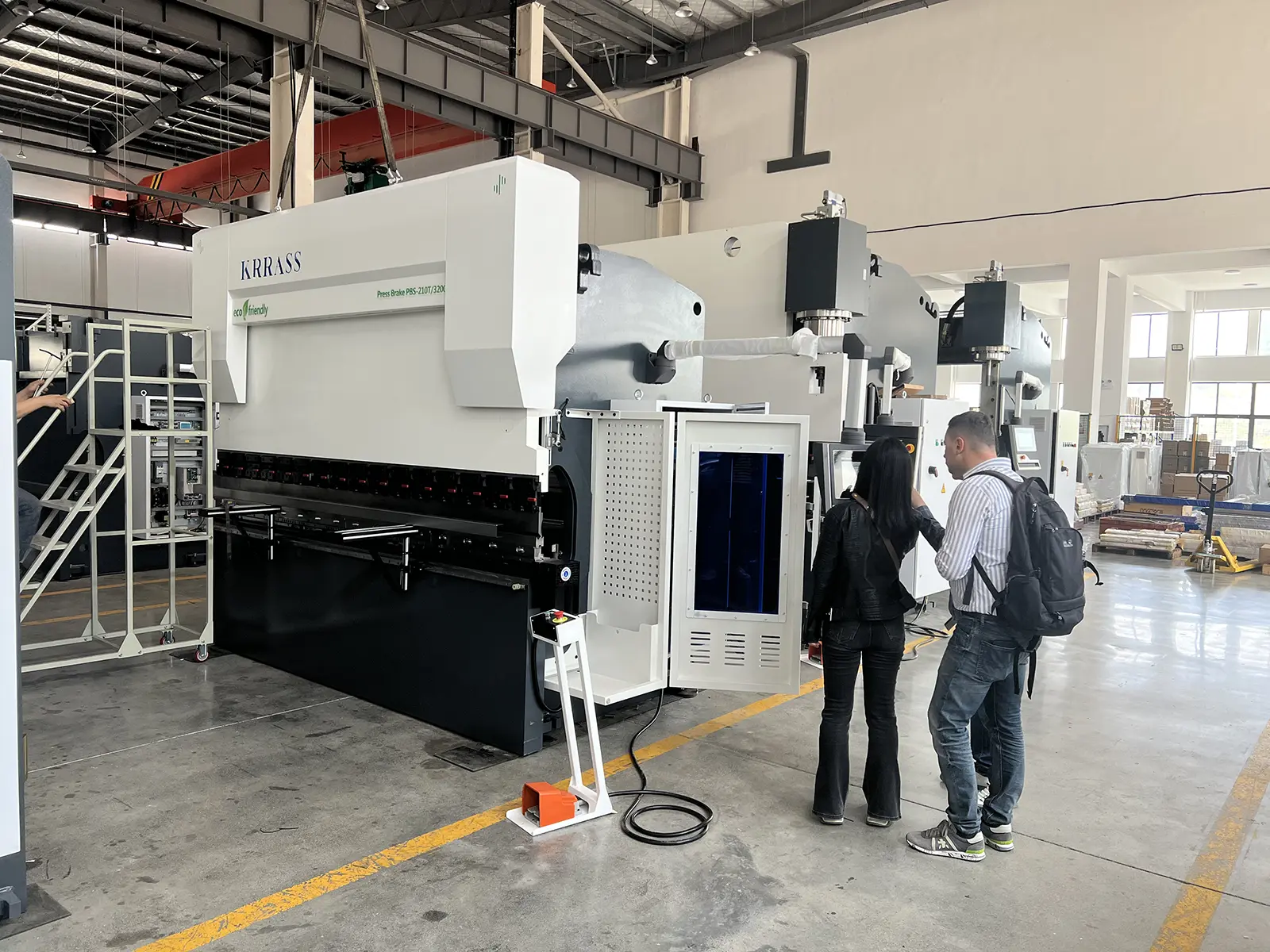
7. Which is More Cost-Effective in the Long Run?
When manufacturers are making decisions about machinery, initial cost is just one part of the equation. The real question often boils down to long-term value: which machine will deliver the most return on investment over its operational life? Let's delve into the comparative cost-effectiveness of CNC and NC Press Brakes.
Initial Investment
Typically, CNC Press Brakes command a higher initial investment compared to NC Press Brakes. This is due to their advanced features, automation capabilities, and integrated software systems. On the other hand, NC Press Brakes, being simpler in construction and operation, are generally more affordable upfront.
Operational Costs
In the realm of operational costs, CNC Press Brakes can lead to savings in labor costs due to their automation. Additionally, their precision can lead to reduced material wastage. NC Press Brakes, while having lower operational costs in terms of maintenance and repairs, may require more manual labor and oversight.
Maintenance and Repairs
Given their complex nature, CNC machines can be costlier to repair and maintain. Any issues with their software or advanced components can lead to specialized, often pricier, interventions. NC machines, being mechanically simpler, generally incur lower maintenance costs, but might not offer the same long-term resilience as some of the hard-wearing CNC models.
Resale Value
When considering an exit strategy or future upgrades, CNC machines typically hold their value better due to their technological advancements. In contrast, older NC models might not fetch as competitive a resale price, especially if newer, more advanced models are readily available on the market.
8. The Future of Press Brake Technology
The world of manufacturing never stands still, and press brake technology is no exception. As we look forward, it's evident that the relentless march of innovation is set to influence the capabilities, efficiency, and adaptability of press brakes. So, what does the future hold for this pivotal machinery?
Integration with Industry 4.0
The manufacturing sector is increasingly integrating with Industry 4.0 concepts. Press brakes will further sync with IoT, facilitating better data collection, analysis, and predictive maintenance. This will not only enhance efficiency but also reduce downtimes.
Enhanced Automation and Robotics
Robotic arms and automation are set to become even more commonplace in press brake operations. This will allow for enhanced precision, consistency, and speed, particularly in high-volume production settings.
Adaptive Technologies
Emerging technologies, like machine learning and AI, will empower press brakes to adapt in real-time to material variances, ensuring consistent quality even when material batches have slight differences.
Green Manufacturing
With global pushes towards sustainability, future press brakes will likely become more energy-efficient, use sustainable materials, and potentially operate with lower noise and waste levels.
Augmented Reality (AR) and Virtual Reality (VR)
AR and VR technologies are set to revolutionize operator training and real-time data visualization. Operators could receive real-time feedback, visual aids, or even simulate entire bending processes before execution, ensuring optimal outcomes.
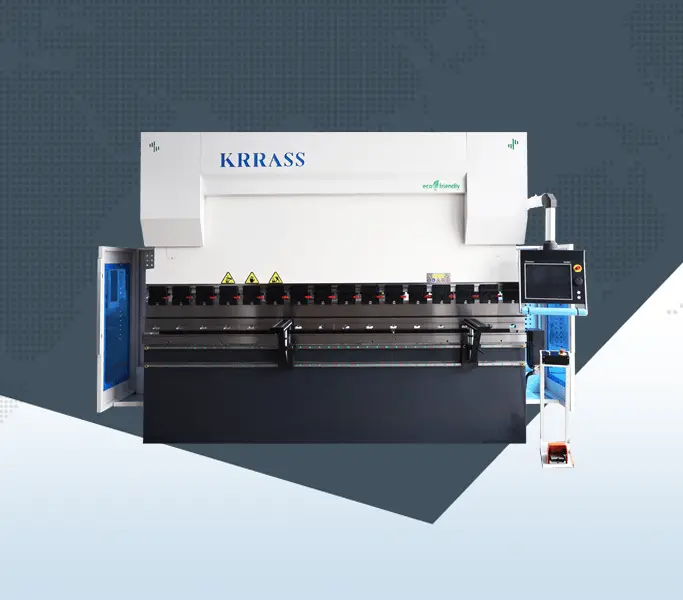
9. How Often Should I Service My Press Brake, Regardless of the Type?
A press brake, like any other substantial machinery, requires regular servicing to ensure optimal performance and extend its operational life. Regular maintenance not only prevents unexpected breakdowns but also ensures that the machine delivers consistent quality over time. But how often should one service a press brake? Let's delve into this crucial aspect.
Routine Checks: Daily to Weekly
These are surface-level checks, primarily visual, to ensure the machine's essential functions are intact. Operators should look for signs of wear, misalignment, leaks, or any unusual noises. Components like backgauge, bending accuracy, and hydraulic systems should receive a quick inspection. These frequent checks can often catch potential problems before they escalate.
Intermediate Maintenance: Monthly to Quarterly
This involves a more thorough inspection. Hydraulic fluid levels and quality should be checked, and if required, replaced. Look for signs of wear on the punch and die, checking for any deformities. Lubrication of moving parts, cleaning of accumulated debris, and recalibration (if necessary) should be part of this maintenance schedule.
Comprehensive Service: Annually
An annual service is a deep dive into the machine's health. It involves checking all components, replacing worn-out parts, recalibrating the machine, and possibly updating any software or firmware for CNC press brakes. This servicing often requires an expert or technician, ensuring the machine is in top-notch condition for the year ahead.
Conclusion
With rapid advancements in the world of press brake technology, staying updated is more than just a luxury; it's a necessity. Knowing the distinctions between CNC Press Brake and NC Press Brakes is crucial to ensuring optimal efficiency and quality in your sheet metal production. If you're on the lookout for top-tier CNC Press Brake manufacturers and other sheet metal machinery, look no further than Krrass. As industry leaders, Krrass provides state-of-the-art solutions tailored to your manufacturing needs.
Read More:
Press Brake Parts: Guide to Structure and Components
Hydraulic Press Brake: In-Depth Look
Precautions for The Use of CHINA CNC PRESS BRAKE
How to choose a Hydraulic Press Brake?
Enhancing Accuracy in China Press Brake Bend Calculations: Factors and Solutions
